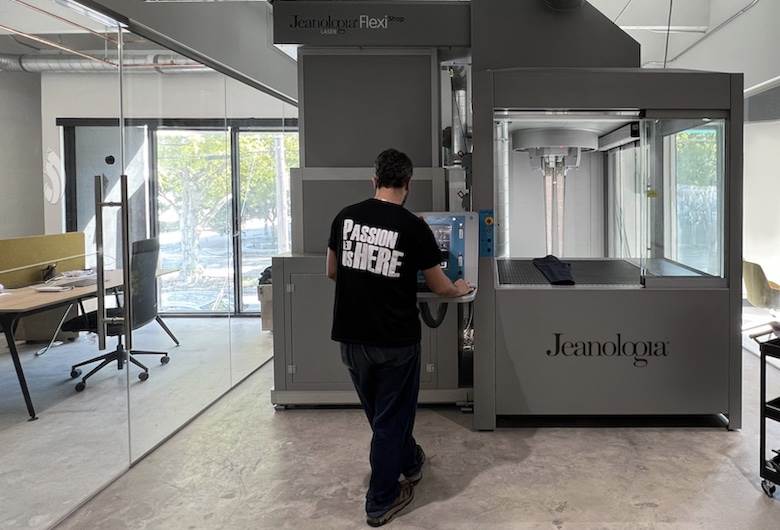Localisation helps move Jeanologia sales needle 55%

Valencian technology developer Jeanologia grew its turnover by 55% year on year in 2021, reaching roughly €62.5 million or $65 million.
Though still short of pre-pandemic revenues, which amounted to €104.5 million ($108 million) in 2019, co-founder Enrique Silla tells Inside Denim that the business he co-founded with his late uncle José “Pepe” Vidal Royo in the 1990s remains both stable and satisfied with its performance. “We are not a short-term company,” Mr Silla says. “We have a clear mission – Mission Zero – to completely eliminate water wastage from jeans production and then, after that, jump into other categories.”
According to internal findings, Jeanologia technologies helped eliminate around 20 million cubic metres of contaminated wastewater from the global textile system in 2021, an increase of 20% over the year previous. In the same year, its machinery was responsible for lowering the industry’s carbon dioxide emissions by 20%, equivalent to 90 million kilograms, Mr Silla relays. The company, based in the city of Paterna, expects a repeat of these environmental achievements in its full-year results for 2022, but a slowdown in the market from September onwards means economic growth is likely to be more or less flat, despite a “fantastic” start to the year.
However, Jeanologia does not have an exporter attitude, its co-founder explains. Rather, it prioritises localised market integration, as evident in its long-term presence in Bangladesh, now the firm's primary market after several years of uncertainty and a change in dynamics for foreign players in China. “We will need to relearn the Chinese market,” Mr Silla says. The country is not currently among the top 10 territories served by Jeanologia.
He instead calls Bangladesh today's “factory of the world” and, having signed a deal with Bangladesh Garment Manufacturers and Exporters Association back in August, Jeanologia is committed to developing the local denim and fashion community there by improving manufacturing efficiencies and implementing more sustainable processes through use of its future-forward technology. The company, whose Dhaka office is home to 20 of its 220 employees, known as “Jeanologists”, in this way intends to nurture its existing social contributions such as donation programmes by building a legacy that reaches far into the future, Mr Silla tells us. “It’s about feelings, an attitude – but it’s also about putting in the effort to improve a country.”
Meanwhile, doors opened to a new innovation hub in Miami’s design district this autumn, created to meet the needs of US brands and designers, now travelling less and less to their Asian production centres, while also acting as a nexus for connecting nearshoring-minded investors with manufacturers from Central and South America. A complete suite of Jeanologia machinery is available for teams to interact and experiment with on-site, enabling them to touch, develop and approve of creative concepts in a more hands-on manner before articles ultimately enter into production elsewhere. “We believe that any prestigious denim brand will have their own small development centre in their headquarters in the future,” Mr Silla states.
For now, though, Jeanologia is looking to anchor its influence on the future of denim by embedding itself within the Bangladeshi ecosystem, while still deepening its footprint in more luxury-oriented growth markets like Italy and Japan, plus tapping into accelerating demand for made-in-the-USA apparel. Not to mention, continuing to advance the firm’s new Urban Factory model and managing its 220-strong team, presently composed of 32 nationalities across 70 countries.
In Mr Silla's view, future growth will come from harnessing the power of Jeanologia technology to reinvigorate an “artisan spirit” that more authentically connects with “the beauty of making” in a leaner, greener fashion – whether near or afar.
Jeanologia’s new Miami innovation hub. Credit: Jeanologia.










